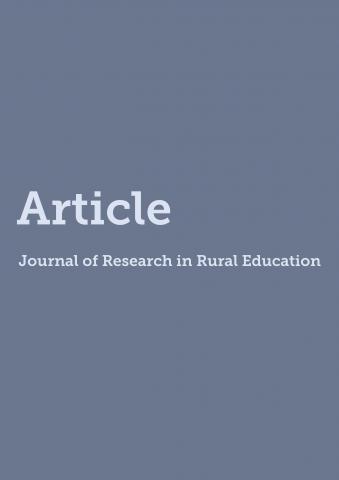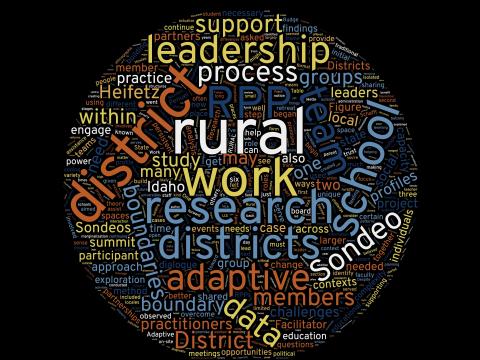Search Articles

book
Large numbers of rural districts have experienced sharp declines in enrollment, unlike their suburban counterparts. Accurate enrollment projections are required, whether a district needs to build new schools or consolidate existing ones. For school districts having more than 600 students, a quantitative method such as the Cohort-Survival Ratio (C-SR) can be employed with a high level of confidence. For districts having fewer than 600 students, enrollment projections using quantitative methods may have diminishing accuracy. In the present study, enrollment projections were performed for three rural school districts in Vermont with populations fewer than 600 students. The objectives were to determine if (a) the C-SR method can be a viable alternative for school planners, (b) a lower enrollment threshold for employing quantitative techniques can be established, and (c) the number of years used to develop the survival ratio affects the accuracy of the projections. To test the accuracy of the C-SR method, enrollments were calculated for school years 1997-1998 to 2001-2002 and were compared to actual enrollments. Percent error rates were calculated for each school district for the prediction time period. The results showed that the C-SR method can be used cautiously to project enrollments for rural districts in the short-term, 1 to 3 years into the future, but loses its effectiveness in long-range planning. In addition, the results showed that the C-SR method could be used reliably for districts with as few as 100 students, which is a significantly lower threshold than reported in the literature.

book
[Review of Small high schools that flourish: Rural context, case studies and resources, and Not so easy going: The policy environments of small urban schools and schools-within-schools]. Journal of Research in Rural Education, 19(4). Retrieved [date] from http://jrre.psu.edu/articles/19-4.pdf

book
Although some studies have explored the influence of academic achievement on rural students’ college access and success, little research has analyzed the relationship between students of different types of rural communities and their persistence in postsecondary education. This study examined the likelihood of college-going students from three different types of rural communities to successfully transition into and persist at a four-year residential college. Specifically, multilevel logistic modeling was used to analyze the odds of students’ persisting in college for at least two academic years based on whether they were from rural tourist communities, rural college communities, and other rural communities. The analysis controlled for a variety of student and high school factors. Findings revealed that student-level factors related to poverty and academic readiness have the greatest effects on college persistence, while the type of rural community has no significant influence.

book
Research-practice partnerships (RPPs), where researchers and practitioners work in concert to address persistent problems of practice, provide promising mutualistic benefits in urban school settings. Drawing on an integrated framework, this case study explores the initial development of an RPP between six small and rural school districts and two universities, highlighting the complexities of leadership and rurality associated with this type of school improvement work. By using a rapid reconnaissance focus group approach, known as the Sondeos, the political landscape in each district emerged, with nuanced (and in many cases shifting) boundaries. This place-conscious adaptive method may be a promising tool to support rural education researchers and rural school leaders as they work together to actualize viable research-informed improvement. However, our findings illustrate that adaptive leadership capacity building may be a necessary element to sustain such work.

book

book
U.S. education research about rural places commonly neglects definitional boundaries. Our systematic mapping review 524 studies approximated how early-career scholars and those new to the rural education research space, including practitioners and policymakers, might experience the literature base and provides a bird’s-eye view of how studies tend to define rurality and the types of locations, sectors, and participant roles that they interrogate within inquiries of rural education. We found definitions or demonstrations of rurality in 30% of our sample and little common ground among such studies. For example, 8.59% of studies in our sample applied the National Center for Education Statistics’ urban-centric locale codes, still making that the most frequently employed schema. Defining rural occurred about twice as often within articles in rural-focused journals than within non-rural-focused journals, while articles in Journal of Research in Rural Education defined rural nearly three times as often as articles in non-rural-focused journals. Regionally, we found considerable evidence that site selection has tended to privilege the South and Midwest, seeming to desert the Northeast, Upper Midwest, and swaths of the West. Regarding sectors, we found rural research on K-12 education (81%) to be far more prevalent than on pre-K (1.15%) or tertiary education (12%). We conclude with provocations for U.S. education researchers toward a goal of richer scholarship.

book
This paper describes a model of relative ruralness for rural states and applies it to North Dakota.From the model, descriptions of the principals and the districts were generated. Comparisons between principals and districts by ruralness are made. Further research is suggested.


